Eric H. Chudler, Ph.D.
Originally published in ODYSSEY magazine, 10:6-7, 2001 (March), Cobblestone Publishing Co.
What has billions of individual pieces, trillions of connections, weighs about 1.4 kilograms, and works on electrochemical energy? If you guessed a minicomputer, you're wrong. If you guessed the human brain, you're correct! The human brain: a mass of white-pink tissue that allows you to ride a bike, read a book, laugh at a joke, and remember your friend's phone number. And that's just for starters. Your brain controls your emotions, appetite, sleep, heart rate, and breathing. Your brain is who you are and everything you will be.
The amazing brain has been compared to many different objects and devices -- from a spider web to a clock to a telephone switchboard. Nowadays, people like to compare it to a computer. Is your brain really like the metal box that hums on your desk? Let's look at the similarities and differences between the two.
Going to the Source
Computers and brains both need energy. Plug your computer into the wall, push a button, and it will get the power it needs to run. Pull the plug and it will shut down. Your brain operates in a different way. It gets its energy in the form of glucose from the food you eat. Your diet also provides essential materials, such as vitamins and minerals, for proper brain function. Unlike a computer, your brain has no off switch. Even when you are asleep, your brain is active.
Although computers and brains are powered by different types of energy, they both use electrical signals to transmit information. Computers send electrical signals through wires to control devices. (Your brain also sends electrical signals, but it sends them through nerve cells, called neurons. Signals in neurons transfer information to other neurons and control glands, organs, or muscles.
There are fundamental differences in the way information is transferred through electrical circuits in a computer and through nerve cells in your brain. When a computer is turned on, electrical signals either reach parts of the machine or they do not. In other words, the computer uses switches that are either on or off. In the nervous system, neurons are more than just on or off. An individual neuron may receive information from thousands of other neurons. The region where information is transferred from one neuron to another is called the synapse. A small gap between neurons is located at the synapse. When information is transferred from one neuron to another, molecules of chemicals ("neurotransmitters") are released from the end of one neuron. The neurotransmitters travel across the gap to reach a receiving neuron where they attach to special structures called receptors. This results in a small electrical response within the receiving neuron. However, this small response does not mean that the message will continue. Remember, the receiving neuron may be getting thousands of small signals at many synapses. Only when the total signal from all of these synapses exceeds a certain level will a large signal (an "action potential") be generated and the message continue.
Form. . .and Function
Despite the differences in the way messages are sent through wires and neurons, computers and brains perform many similar functions. For example, both can store memories -- computers do it on chips, disks, and CD-ROMs, and brains use neuronal circuits throughout the brain. Both computers and brains can be modified to perform new tasks. New hardware and software can be installed in computers to add additional memory and programs. The brain undergoes continual modification and can learn new things. The brain can sometimes rewire itself when necessary! For example, after some kinds of brain injuries, undamaged brain tissue can take over functions previously performed by the injured area. I'd like to see a computer rewire itself after its hard drive failed!
Computers and brains both have the ability to monitor their surroundings and respond with behavior to manipulate their environment. Sensors attached to computers can sample temperature, humidity and light levels. Computers can be programmed to control heaters, lights, and other equipment in response to the information they receive. Your brain is also connected to sensors or receptors in your eyes, ears, nose, mouth, and skin. Your brain may respond to sensory information automatically (such as causing your body to shiver when it is very cold), or it may cause you to alter your behavior. For example, if a room is too cold, your brain might send signals to muscles to get you to move to a warmer place or to put on a sweater.
The delicate contents inside your computer are protected by a hard cover. Your skull provides a similar function for your brain. Nevertheless, the external and internal components of computers and brains are all susceptible to damage. If you drop your computer, infect it with a virus, or leave it on during a huge power surge, your precious machine will likely be on its way to the repair shop. When damaged parts are replaced or the virus-caused damage is removed, your computer should be as good as new. Unfortunately, brains are not as easy to repair. They are fragile and there are no replacement parts to fix damaged brain tissue. However, hope is on the horizon for people with brain damage and neurological disorders as scientists investigate ways to transplant nerve cells and repair injured brains.
The BIG Difference
No doubt the biggest difference between a computer and your brain is consciousness. Although it may be difficult for you to describe consciousness, you know you are here. Computers do not have such awareness. Although computers can perform extraordinary computational feats at astounding speeds, they do not experience the emotions, dreams, and thoughts that are an essential part of what makes us human. At least not yet! Current research in artificial intelligence is moving toward developing emotional capabilities in computers and robots. (See the January 2001 ODYSSEY issue for more on this.)
During the month of March, people around the world will be celebrating Brain Awareness Week (BAW). During BAW, students, teachers, and scientists around the country will be using their brains to share knowledge about the most wonderful, complicated, mysterious structure in the universe. So get your brain in gear and read this issue of ODYSSEY. It's a great way to begin.
Dr. Eric H. Chudler is consulting editor for this issue.

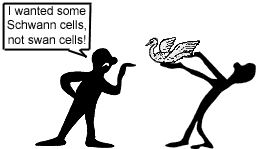



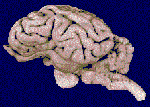
 Perhaps when people use the 10% brain statement, they mean that only one out of every ten nerve cells is essential or used at any one time? How would such a measurement be made? Even if neurons are not firing
Perhaps when people use the 10% brain statement, they mean that only one out of every ten nerve cells is essential or used at any one time? How would such a measurement be made? Even if neurons are not firing  Furthermore, from an evolutionary point of view, it is unlikely that larger brains would have developed if there was not an advantage. Certainly there are several pathways that serve similar functions. For example, there are several central pathways that are used for vision. This concept is called "redundancy" and is found throughout the nervous system. Multiple pathways for the same function may be a type of safety mechanism should one of the pathways fail. Still,
Furthermore, from an evolutionary point of view, it is unlikely that larger brains would have developed if there was not an advantage. Certainly there are several pathways that serve similar functions. For example, there are several central pathways that are used for vision. This concept is called "redundancy" and is found throughout the nervous system. Multiple pathways for the same function may be a type of safety mechanism should one of the pathways fail. Still, 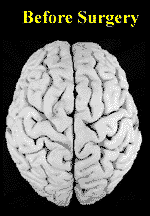





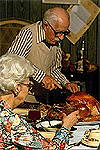

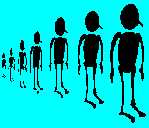 The brain grows at an amazing rate during development. At times during brain development, 250,000 neurons are added every minute! At birth,
The brain grows at an amazing rate during development. At times during brain development, 250,000 neurons are added every minute! At birth, 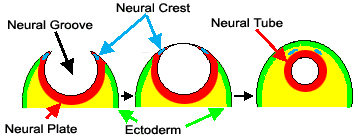
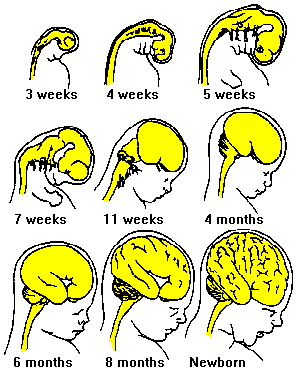
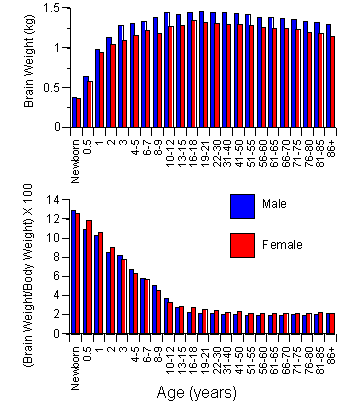 The top graph on the left shows the brain weights of males and females at different ages. The bottom graph shows the brain weight to total body weight ratio (expressed as a percentage). The adult brain makes up about 2% of the total body weight.
The top graph on the left shows the brain weights of males and females at different ages. The bottom graph shows the brain weight to total body weight ratio (expressed as a percentage). The adult brain makes up about 2% of the total body weight.
 The central nervous system (CNS) is made of the brain and the spinal cord and the peripheral nervous system (PNS) is made of nerves. Together they control every part of your daily life, from breathing and blinking to helping you memorize facts for a test. Nerves reach from your brain to your face, ears, eyes, nose, and spinal cord... and from the spinal cord to the rest of your body. Sensory nerves gather information from the environment, send that info to the spinal cord, which then speed the message to the brain. The brain then makes sense of that message and fires off a response. Motor neurons deliver the instructions from the brain to the rest of your body. The spinal cord, made of a bundle of nerves running up and down the spine, is similar to a superhighway, speeding messages to and from the brain at every second.
The central nervous system (CNS) is made of the brain and the spinal cord and the peripheral nervous system (PNS) is made of nerves. Together they control every part of your daily life, from breathing and blinking to helping you memorize facts for a test. Nerves reach from your brain to your face, ears, eyes, nose, and spinal cord... and from the spinal cord to the rest of your body. Sensory nerves gather information from the environment, send that info to the spinal cord, which then speed the message to the brain. The brain then makes sense of that message and fires off a response. Motor neurons deliver the instructions from the brain to the rest of your body. The spinal cord, made of a bundle of nerves running up and down the spine, is similar to a superhighway, speeding messages to and from the brain at every second. 
